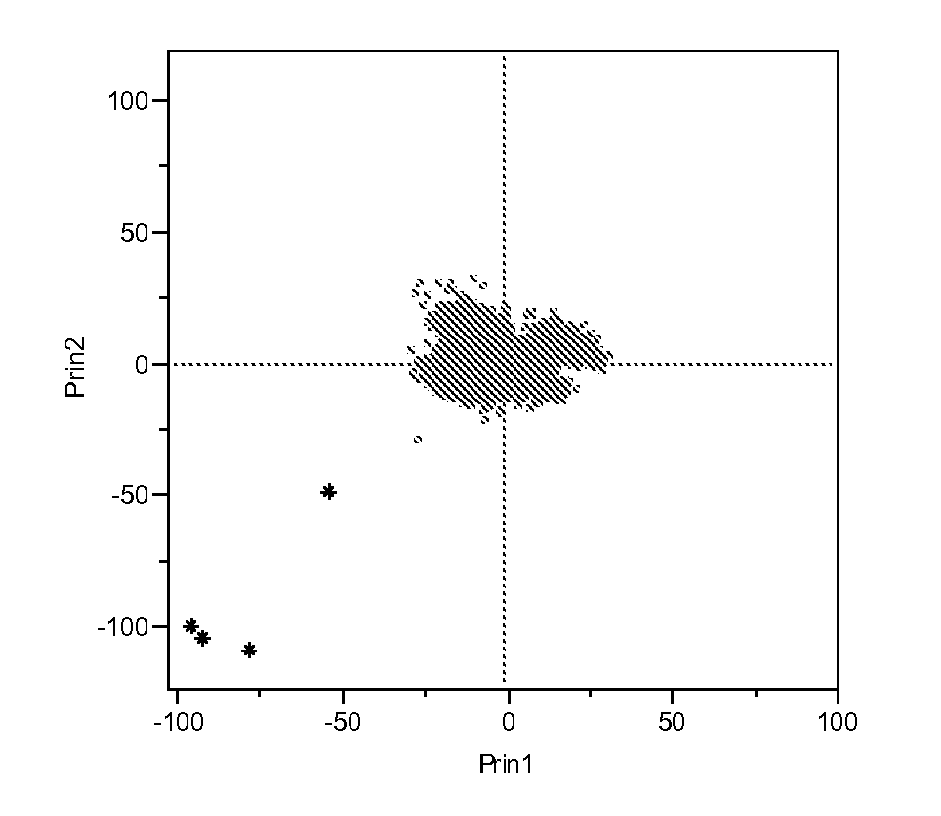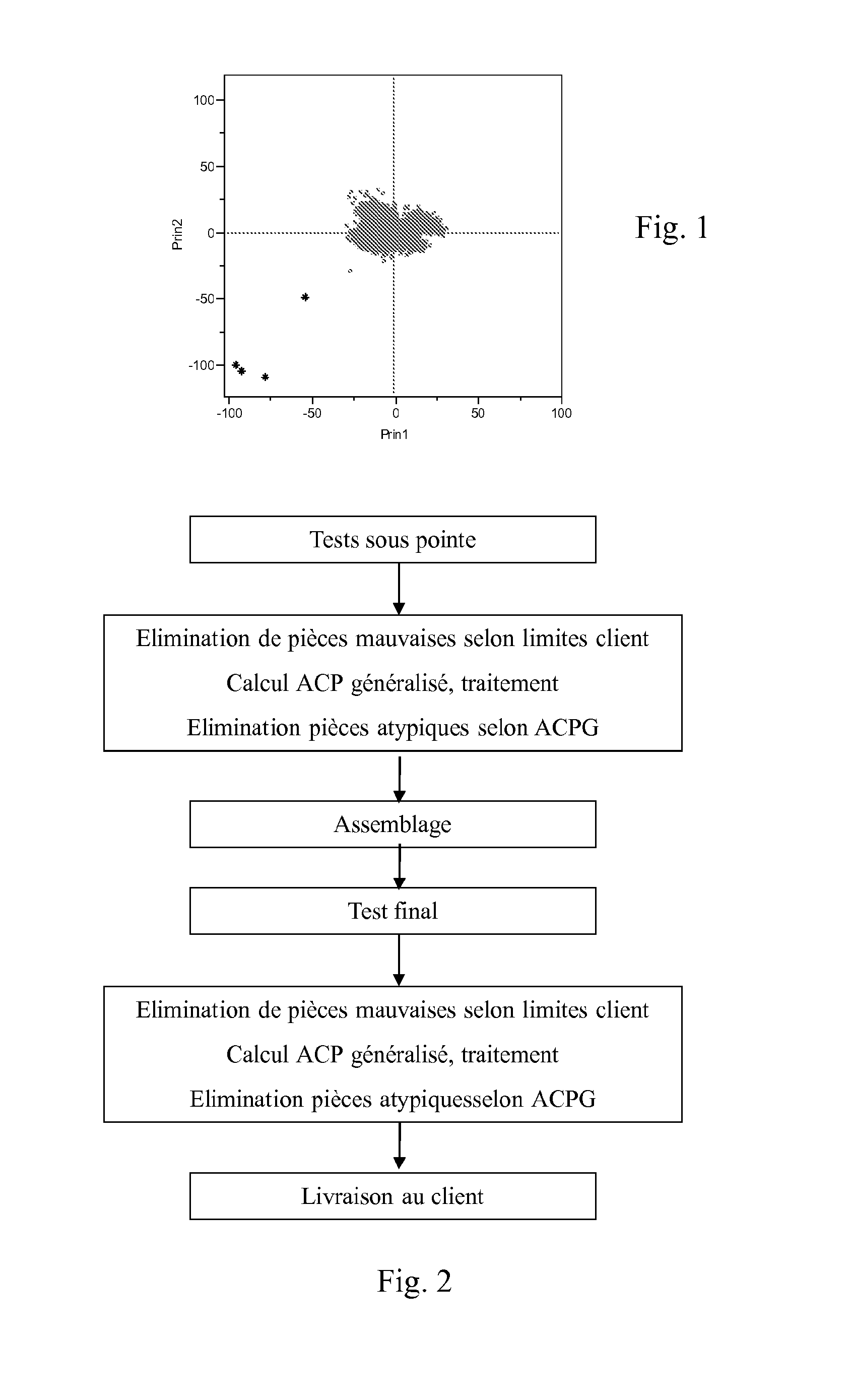Method for detecting atypical electronic components
a technology of electronic components and detection methods, applied in the field of detecting atypical electronic components, can solve the problems of defective components, components that are rejected and therefore not delivered to customers, and can have latent defects that will be revealed
- Summary
- Abstract
- Description
- Claims
- Application Information
AI Technical Summary
Benefits of technology
Problems solved by technology
Method used
Image
Examples
Embodiment Construction
[0022]To this end, the invention envisages a method for detecting atypical electronic components for the quality control of a set of n electronic components at the end of the manufacturing process, said components being subject to a number p of unit tests providing digital data, this set of n components consisting of electronic components whose response to each of the p unit tests is contained within pre-defined limits, called customer specification limits, and specific to each of the p tests, using the multidimensional information of these n electronic components' responses of dimension p.
[0023]It is understood that unlike the state of the art, which works in one or two dimensions, this method will work in p dimensions and thus will be able to use all the information from the p tests, and consequently identify more atypical components or call into question some rejected components.
[0024]Indeed, for the majority of atypical components, their latent defect is detectable in the atypia...
PUM
 Login to View More
Login to View More Abstract
Description
Claims
Application Information
 Login to View More
Login to View More - R&D
- Intellectual Property
- Life Sciences
- Materials
- Tech Scout
- Unparalleled Data Quality
- Higher Quality Content
- 60% Fewer Hallucinations
Browse by: Latest US Patents, China's latest patents, Technical Efficacy Thesaurus, Application Domain, Technology Topic, Popular Technical Reports.
© 2025 PatSnap. All rights reserved.Legal|Privacy policy|Modern Slavery Act Transparency Statement|Sitemap|About US| Contact US: help@patsnap.com



